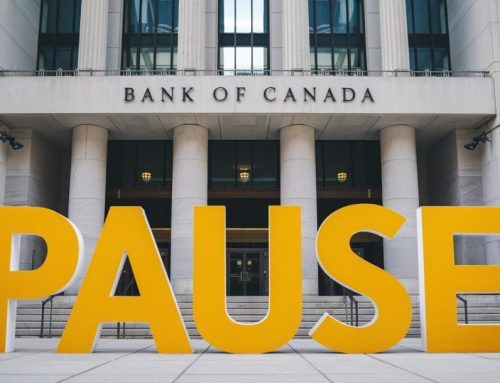Every mortgage comes with a maturity date, which marks the end of your mortgage term. This can informally be referred to as your renewal date. If you’re fortunate enough to have a zero balance on this date, then that’s it! You’re now mortgage-free and no further action is needed.
But if you’re like most people, you’ll still have a sizeable balance that will require a new mortgage term. This is a golden opportunity to save thousands! The biggest and most costly mistake many people make at this stage is simply signing the renewal document and sending it back to the lender. It can be quite tempting, especially when you’re leading a busy lifestyle. It’s easy and takes close to zero time. But it can be a costly mistake as you could be giving up thousands in savings.
Many believe they don’t have the time to deal with the renewal process and prefer to sign the documents to avoid any hassle.
But how much time do you think it will take?
This is where it helps to understand the renewal process and exactly what is involved with transferring your mortgage to another lender.
The Mortgage Transfer / Refinance Process
Changing lenders involves going through the qualification process, which is similar regardless of whether you’re refinancing or transferring your mortgage. However, this process is generally much simpler than when you purchased your home, as there is no down payment to verify.
There are ten steps involved with transferring or refinancing your mortgage:
Step 1: Complete the application
Step 2: Upload your documents
Step 3: Select the mortgage you want
Step 4: Submission for approval
Step 5: Lender issues a mortgage commitment
Step 6: Document signing
Step 7: Condition fulfillment
Step 8: Legal instruction
Step 9: Final signing
Step 10: Mortgage closing
Step 1: Complete the Application
We will email you a link that will allow you to complete the mortgage application safely and securely online. Alternatively, it can be done through this link. Please ensure the application is completed with as much detail as possible, including the following information:
- 3 years employment history
If your current employment is more recent, make sure to include your previous employment to cover the full three years. The same applies for your living address.
- Assets
While assets are not as important when renewing your mortgage as they are when you’re purchasing a property, mortgage lenders still like to see them as it’s a demonstration of financial strength. They are also required for a more complete mortgage application.
Financial asset values can fluctuate day by day, so the exact dollar amount is not required and rounding to the nearest thousand is acceptable. Lenders rarely need to verify this information on a mortgage transfer or refinance.
Once you have completed the application with as much detail as possible, the final step is to sign the client consent. This authorizes us to check your credit. Follow these steps:
- Check the box marked ‘Read and sign consent’.
- After reading the terms, check the box and click the button marked ‘Give consent’.
- Click the button marked ‘Finish adding consent’.
You can then review the application to ensure everything is accurate. At the bottom of the page, there is a comment box where you can enter any details you think are relevant to your application.
Finally, check the button ‘Finish and submit application’. That completes step one!
We can still make changes from our end if any additional information needs to be provided after you submit the application.
Step 2: Upload Your Documents
After you submit your application, the system will automatically generate a list of required documents. Please ensure you read the description under each requirement to fully understand what the lender is looking for. This can eliminate some of the back-and-forth communication, improving your overall experience with the process.
If you do not have all the documents right away, you can start by uploading what you have available. It’s understandable that items such as employment letters may take a few days to acquire.
Please keep in mind that the lender has the right to request additional documents at any time during the process.
For a better idea of the requirements in advance, check out my blog on “Everything You Need to Know About Mortgage Documentation.” Reading and understanding the requirements in this blog can help ensure you provide the lender with exactly what’s needed, reducing the need for additional requests or alternative documentation.
Step 3: Select the Mortgage You Want
Once you have uploaded your documents, we’ll process your application and will advise if everything else is required at that time. Your PMT account manager will then present you with your lowest rate options, along with any notable details or additional restrictions on each one (if applicable).
If you have any questions or concerns about the options presented, please let us know. We’ll always present you with the lowest rate options available. However, if you feel the choices presented are not the right fit for your needs, then there are likely alternative options available. We deal with all types of lenders, including major banks, credit unions and monoline lenders, and are well positioned to provide you the exact mortgage you’re looking for.
Step 4: Submission for Approval
Once you have chosen which lender and mortgage product you would like to move forward with, we will submit your application for approval. The lender will then place it in a queue to be reviewed in sequence. Response times can vary depending on the lender; some may respond within a few hours, while others might take over a week. In most situations, we’ll get a response within two business days.
Even the fastest lenders can experience delays if they have excessive workload, often due to a particularly hot rate they might be offering.
We’ll notify you that your file has been submitted for approval and will provide you with an estimate of when we can expect to hear back from the lender. We’ll be watching closely and following up with the lender regularly during this part of the process.
Step 5: Lender Issues a Mortgage Commitment
Once the lender approves your application, they issue a mortgage commitment. This is a conditional approval which outlines all the details of the mortgage, including its terms and conditions. We would have requested and collected most of these documents from you at the time of application, but mortgage lenders will not generally review them until you’ve signed the commitment.
The commitment will list ALL required documents, including those you have already provided. Even if the lender has already reviewed the documents, the full list of requirements will still be included. The commitment will often contain check boxes beside each of the required documents or conditions. Note that these are just bullet points and are not checked, nor do they have to be.
Step 6: Document Signing
Shortly after the lender issues the mortgage commitment, you’ll receive an email from a member of our team containing a link where you can download the mortgage commitment, along with other related documents. It will also provide a brief explanation of each one, including detailed instructions on where you need to sign, as well as any points that you may need to pay particular attention to.
Refinancing
If you’re transferring or switching your mortgage over to another lender, an appraisal is generally not required. However, if you’re refinancing, an appraisal may be necessary. While we will attempt to get it waived for you, it’s often a firm requirement. Once we receive your signed documents, we will order the appraisal on your behalf. You will receive an email from an appraisal service such as Solidifi, including a link for a secure online payment. Once the payment is made, you will be contacted directly by the appraiser to schedule access your property.
The initial payment is just a pre-authorized hold on your credit card and is not actually charged until the appraisal has been completed. Note that the actual fee can vary/increase based on certain factors such as property size, value, location, mileage, etc.
Note that there are times when the cost of the appraisal can be reimbursed to you and your PMT account manager will advise you if you’re eligible.
For more information on refinancing, check out my blog on Everything You Need To Know About Mortgage Refinancing.
Step 7: Condition Fulfillment
Once you have signed the approval package, we will submit it through to the lender. At which time, they will provide us with an update with any conditions that may still be outstanding. We’ll then notify you of the update immediately. The sooner we receive the required documents from you, the sooner we can get your file completed and the better experience you will have with the process.
Step 8: Legal Instruction
Once the conditions are fulfilled, the lender will instruct either your lawyer or a title insurance company. This could be either FCT (First Canadian Title) or FNF (Fidelity National Financial).
Transferring / Switching
If transferring (switching) your mortgage, FCT or FNF will always be used. There is no cost to you as the fee is paid by the lender, providing that you have a standard charge mortgage. If your mortgage was registered as a collateral charge, then a fee may or may not apply. Your PMT account manager will advise you of any fees, if applicable, when providing you with your options. For more information, you can check out my blog on Everything You Need To Know About Collateral Mortgages
Refinancing
If refinancing, it is your choice if you would like to use a lawyer or FCT/FNF. FCT/FNF will generally be more cost-effective.
Once FCT or FNF (or your lawyer) receives the instruction from the lender, they will request the payout statement from your current lender. There are a few things you should keep in mind:
Lenders will only send the payout statement within 30 days prior to the closing date. This is to ensure the final figure on the payout statement is accurate as of the closing date of the new mortgage (usually the maturity date of the existing mortgage).
Step 9: Final Signing
Once the payout statement is received from your current lender, you will be contacted by a representative of FCT or FNF to set up a time for you to sign the final documents. You may get a call for the appointment a week prior to closing, regardless of how much time has passed since we’ve confirmed with you that your file is complete. They will prioritize files closing sooner, and depending on their volume.
This appointment will take place in the comfort of your own home at a time that is convenient for you. Evening and weekend appointments are typically available.
Remote signing appointments are usually available if needed or preferred. You would just ask the FCT or FNF representative when they contact you.
If you are refinancing and have chosen to work with a lawyer, then this appointment will be done at your lawyer’s office.
Travelling?
Please inform us if you plan on travelling outside of Canada prior to the closing of the new mortgage. We can then ask FCT or FNF to accommodate where possible.
Documents required
You may be required to bring original income documents (job letter, most recent paystub, or NOA (if required), along with two pieces of valid Canadian ID (only one piece needs to be photo ID. The second piece can be a credit card, SIN card, birth certificate, etc. (Health card is not accepted. For more information on ID requirements, please read my blog on How Your ID Can Create Problems with Your Mortgage Closing.
Step 10: Mortgage Closing
Once you have signed the final documents, your mortgage will be ready for closing (funding) within 1-3 business days. If your renewal/closing date is beyond 1-3 days, then it will be set to close on the scheduled closing date. This is when funds are transferred from your previous lender to your new lender and your new mortgage becomes active.
The new lender will send you out a welcome letter within a few weeks, via traditional mail. The letter will contain your mortgage information, as well as instructions for accessing your online portal to access your mortgage information (where applicable). The Paul Meredith Team will also be providing you with a PDF with your lender contact information if you need to reach out to them to get access in advance of receiving the letter.
ADDITIONAL INFORMATION
You can ask FNF, FCT (or your lawyer if applicable) to automatically deposit any extra available funds (if refinancing) into your bank account.
The mortgage amount on the commitment and the final amount will rarely match when completing a mortgage transfer. This is because the final amount required to payout your current lender cannot be confirmed until they have issued the payout statement (which is requested by FCT or FNF). The mortgage amount on the final set of documents will then be updated to match the amount on the payout statement. On final signing, the payout statement received from your existing lender will be provided to you by FCT or FNF.
What Happens if Your New Mortgage Closes Late?
Providing that you start the process allowing us to submit to a lender no later than 30 days before your renewal date, then you can expect the new mortgage to close on time. However, the exact timing of the close can vary depending on your current lender’s timing in releasing the payout statement. It can be released within a few days; however, some lenders will take longer. Until the document has been released, final documents cannot be created as the exact mortgage amount is still unknown.
While important, the exact closing date of your mortgage transfer is nowhere near as important as it would be if you were purchasing a property. While most mortgage transfers will close on time, it’s still not uncommon for them to close late. This is generally due to either starting the process late in the game, or the current lender dragging their feet in releasing the payout statement. For more information on this, please read my blog on What Happens When Your Mortgage Renewal Closes Late.
Conclusion
The mortgage transfer/refinancing process is relatively straightforward for the most part. The better your understanding of the process, the smoother it will seem and the better your experience.
We’re here to make this easy for you! We’ll provide you with clear and concise instruction and communication along the way. It’s important to us that you have a great experience, so feel free to call or email us with any questions.








Leave A Comment